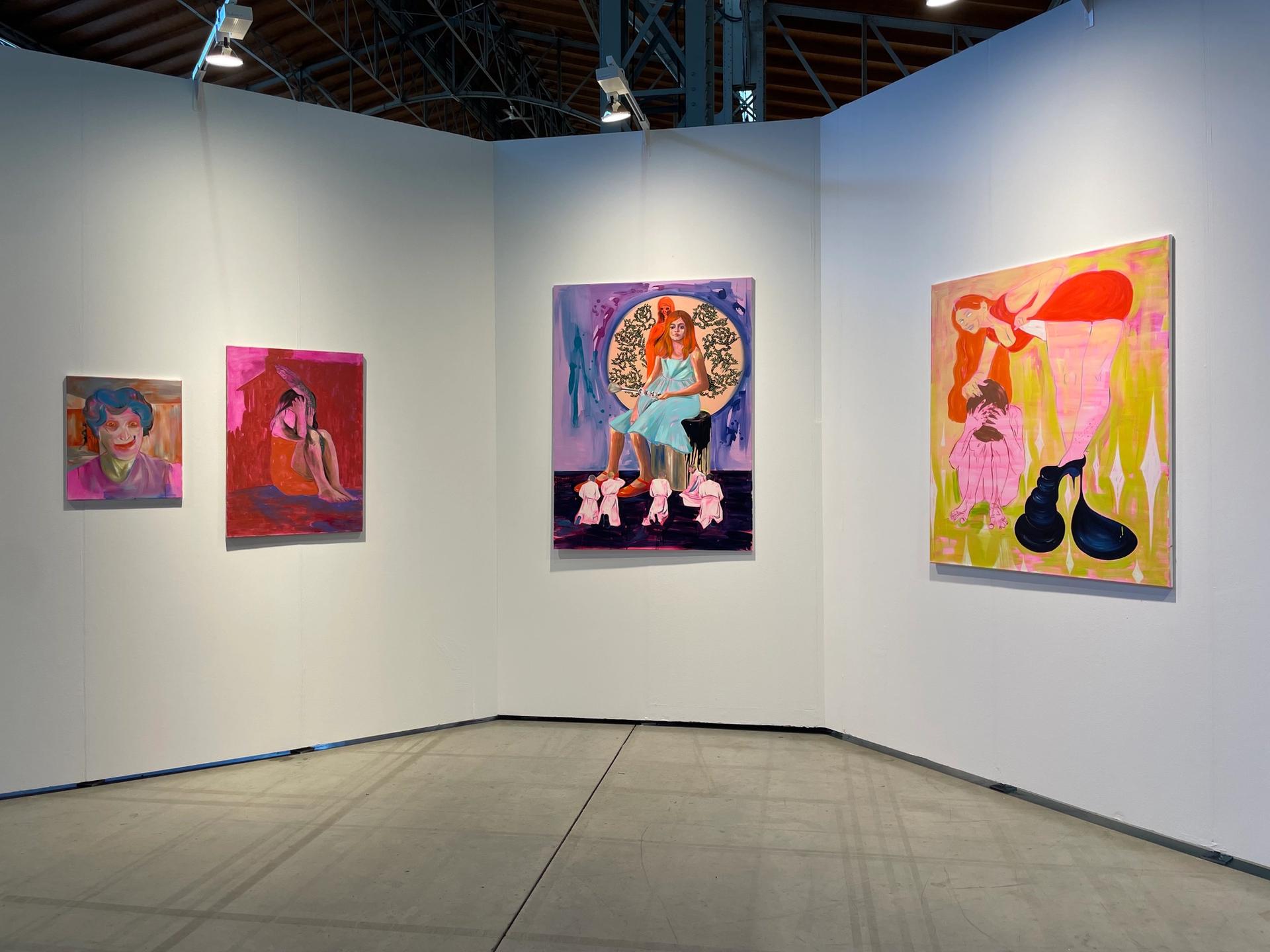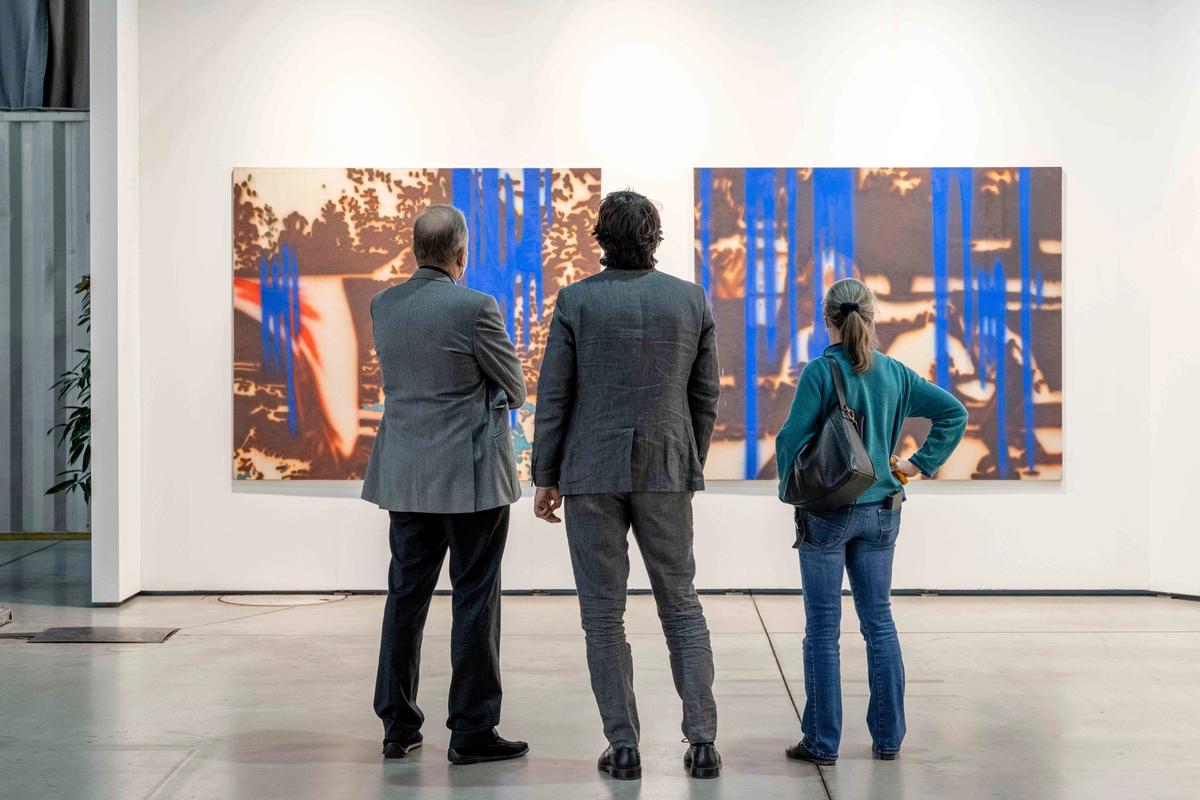After a well-received debut last June, the second edition of Vienna’s Spark Art Fair (24-27 March) is trying to solidify itself as a fixture in the shifting European fair calendar.
Installed at the Marx Halle, effectively displacing the stalwart Vienna Contemporary (VC) previously held there, Spark moved its dates to March to further distance itself from VC, which will take place as a downsized “boutique” style event this year from 8-11 September at the Kursalon Vienna. With 24 new exhibitors this year, Spark features 80 galleries, 50% of which are Austrian with the rest hailing from across Europe.
“I think there is a visible shift to doing more business in Europe after Brexit and the pandemic, most visible in the recent gallery boom in Paris. I think Vienna has that same potential to grow, too,” says Spark founder and director Renger van den Heuvel, who notably served as the director of VC since 2012—when the fair was originally founded as ViennaFair—until his departure in 2019. Indeed, dealers like Eva Prensenhuber, who has galleries in Zurich and New York, and Berlin-based Gregor Podnar have recently opened or announced new outposts in Vienna.
Like Paris, Vienna has a rich history of artistic production along with a pre-existing infrastructure of world-class institutions. But unlike other major European art capitals, Vienna’s collector base remains relatively small and conservative, which generated speculation as to whether the city could support two contemporary fairs in one year when Spark was first announced.
The Austrian collector base is “loyal to its artists” and traditional in their buying methods, says Nathalie Berghege-Compoint of Galerie Lelong & Co. With locations in both Paris and New York, the gallery has the most international footprint of any at Spark, where it is participating for the first time with a booth dedicated to new works by Vienna-native Art Informel pioneer Arnulf Rainer, ranging in price from €85,000-110,000. The presentation complements a concurrent show of 92-year-old Rainer’s latest works at the gallery’s Paris outpost. “[Austrian collectors] seem less inclined to buy from a jpeg, so we thought we would bring the work to them to see in person,” Berghege-Compoint says. By midday of the VIP preview, half of all works on view at the booth had sold.
Yet Sophie Tappeiner of the eponymous Vienna gallery, opened in 2017, says the city’s collector base is changing. “There has been a new generation of galleries opening here over the last decade, and a new generation of collectors emerging with them,” she says. Having participated in the inaugural edition, this year she has returned with one of the more radical booth presentations: a single floor work by the Danish installation artist Lone Haugaard Madsen (€16,000).

Alex Urban's work with Leto
Courtesy of the artist and Leto
“[Spark] is a more interesting fair proposition,” Tappeiner says. “More democratic maybe: all exhibitors get the same booth size and put on one solo artist presentation, and I think the costs to exhibit are comparatively low to other fairs. There’s a lot more room for interpretation of how to use your booth space.” In contrast, Vienna Contemporary, before relaunching in 2021 as a boutique fair after the first edition of Spark, was originally modelled on larger, hierarchical art fairs and remains invite-only. Chaired by the Russian arts patron Dmitriy Aksenov, VC also foregrounded galleries from Eastern Europe alongside central and western dealers.
Vienna has long been identified as the “gateway to Eastern Europe,” and the East-West exchange remains evident in both of the city’s contemporary art fairs. At Spark, around 13% of exhibitors are from Eastern European countries like Hungary, Poland, Slovakia, Slovenia and Romania. For galleries located to the east of Austria, Viennese fairs offer a valuable stepping stone to the wider Western art market.
“Eastern Europe has a younger commercial art scene—in Poland, it of course only started in the 1990s—and it can be difficult to get a foothold in the broader marketplace,” says Sebastian Gawłowski of Warsaw’s Leto. At Spark, the gallery is showing paintings ranging in price from €2,000 to €10,500 by Alex Urban, a Polish artist who explores the visceral realities of womanhood under patriarchy in candy colours that are so sweet they look almost toxic.
Leto was quick to join Spark after three years participating in VC, noting the former’s focus on solo artist presentations. “It’s a good opportunity to reposition an artist with a strong Eastern European point of view within a broader European context.”
Similarly, Flaviu Rogojan of the Romanian gallery Zina notes that the solo-artist setup of Spark was a draw for them given that the gallery only opened in October 2020. Spark marks the gallery’s first-ever art fair, where they are presenting the surreal works of Romanian-born, Berlin-based Hortensia Mi Kafchin, priced between €5,000-14,500.
“Focusing on just one artist is much easier for an emerging gallery that is still building itself up and you can show a much wider scope of work by an artist who may be lesser known abroad,” Rogojan says, adding: “The Romanian art market is not just small but stagnated—we have few institutions that can support young artists, so we depend on the international art market. Vienna, at least, is driveable for us.”
Absent from the list of Eastern European exhibitors at this year’s Spark, however, are dealers from Russia and Ukraine—an absence of circumstance rather than design. Moscow’s pop/off/gallery had been due to participate but backed out of the fair as soon as Russia's Ukrainian invasion began four weeks ago, citing transportation and logistics delays and dangers, according to van den Heuvel. While no Ukrainian galleries or artists are present at the fair, photographer Anastasia Samoylova is the only Russian artist represented at the fair by the Spanish gallery Sabrina Amrani.
“We are against this war but the one thing we should avoid now is thinking in black and white, otherwise this war will be even more detrimental,” says van den Heuvel. “A cultural boycott of Russian art is not the answer. Art is crucial for dialogue and dialogue is crucial for diplomacy.”
Still the war has cast a shadow on a market that is only just getting back on its feet following Covid disruption. “I think everyone in Europe is afraid and angry, people feel a bit desperate because one crazy guy seems unstoppable. There are some who feel it might not be a good time to buy,” says Galerie LeLong’s Berghege-Compoint.
Against the backdrop of a changing Europe, van den Heuvel admits there is plenty of risk in starting a new fair: “The dust has not settled on the art market yet in this increasingly uncertain world—we don’t know how the chips will fall but our goal remains to support galleries, artists and the production of art. I feel lucky we have the freedom to do this.”


